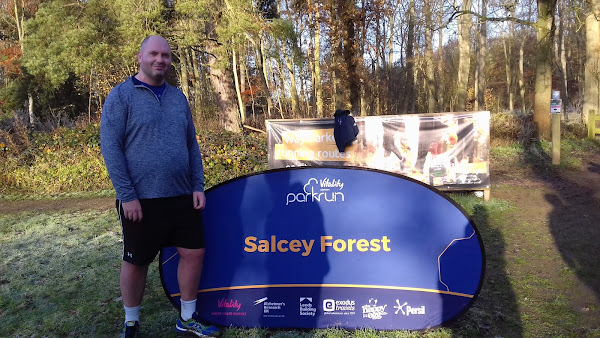When the excitement of having run my first parkrun last week had died down, I took some time to reflect on the run. The biggest thing to improve was pacing - it was very unpredictable at Linford Woods, as I basically just went all out, recovered, and went all out a bit more! This week, my goal was to try to smooth out the peaks and troughs from last week, even if it means it takes longer to finish.
As I was reflecting, I also realised that I really enjoyed running through the woodland at Linford Woods parkrun. I used to enjoy spending time in various woods growing up, but I think the last visit was probably when I was still in school, so even though I wasn’t expecting the rainforest, the idea of a forest definitely added to the lure!
The area
Located on the outskirts of Northampton, and close to the M1 motorway, Salcey Forest is the largest remnant of ancient woodland in the country.
The forest is home to a number of 500-year-old oak trees, known as the Druids, and a wide range of wildlife, including deer, foxes, birds, and butterflies.
During World War 2, elephants from a local circus were conscripted to help with forestry activities, such as logging. The elephants would often use a body of water close to the start line to bathe after their daily activities. The body of water is still present today, and is known as the Elephant Pond (unfortunately, no elephants were to be seen when I visited).
In addition to the parkrun course, the forest also has a number of marked trails, including 1km, 3km, 5km, and 10km, suitable for walking and running.
Toilets, a cafe and paid parking are all available close to the start line.
The course
The course is a single lap around the trails of the northern end of the forest. The trails are mostly dirt and gravel. The entire route is within the confines of the forest itself, and so is quite shielded from the weather.
Paid parking is available on-site, with a cafe, and free toilets located near the carpark.
The run
It was a misty and frosty start to the morning, and I had seen that some other events in the area had been cancelled due to ice on the course, so I was a little worried that we could face the same fate. Fortunately for me, the lack of tarmac meant I need not have worried!
Something that I noticed at this event, which I hadn’t seen at previous events, was that the event team encouraged participants to seed their start position based on their expected finish time. First the runners who expected to finish under 20 minutes were asked to take their place, then those under 25 minutes, ...30 minutes, ...45 minutes, and the remainder. Given the relatively narrow paths, this made a lot of sense!
The run itself went off without a hitch, however, one thing I would perhaps do differently would be to wear trail shoes if the weather was similar, as the course did get a little slippy in places as the frost began to thaw and get chopped up by the faster runners.
Thank you to all of the volunteers, who made this run a very pleasant one!
Links: Run report | Results | Strava
Reference: Forestry England
